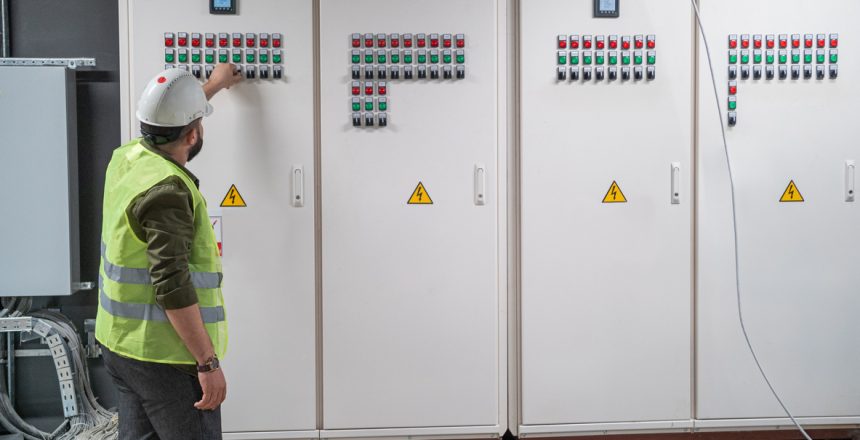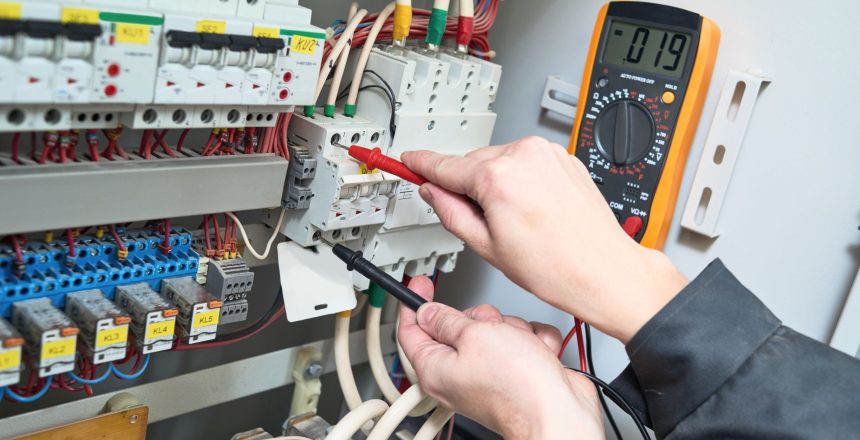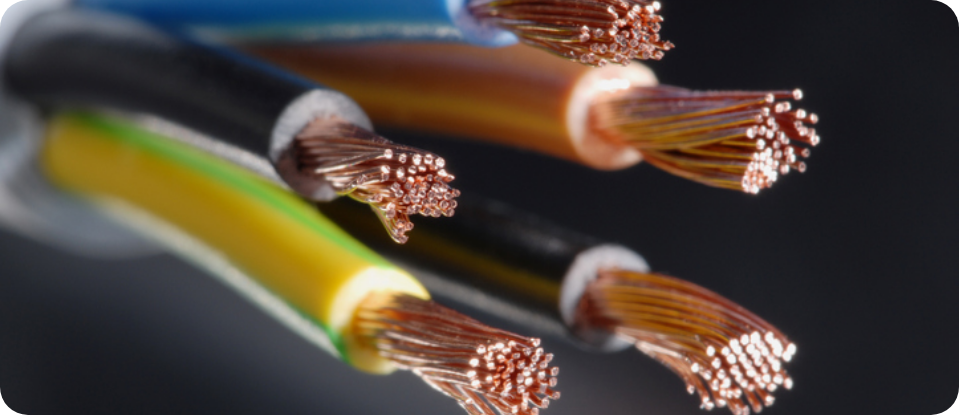This is often a question we get asked, and in many cases, our reply is, ‘why do people need to go into an electrical control panel’?
Demands on maintenance and service engineers often means that there is a lack of available competent persons who can react quickly when things stop working. This may be a production line in a facility that has broken down, a pump that has suddenly tripped out on a remote site, or a remote communication link that has frozen and needs a reset. In an ideal world, the right person for the job would be just around the corner; they would be able to attend and resolve the issue and would fully understand the job in front of them and able to avoid danger.
In the real world, this scenario rarely exists, those competent persons are tied up in another equally pressing breakdown, or they are not local to the problem. Things grind to a halt which costs the business dearly. Yet there are persons available who could intervene, but they do not understand what they are doing in many cases. If they have a go at fixing things, they make the situation worse or create a dangerous situation.
Competent
The word ‘competent’ has been used several times in this article and it is Regulation 16 of the Electricity at Work Regulations 1989 to which we must refer. It is important to state that this regulation does not restrict electrical work to Electricians and Electrical Engineers; in certain circumstances, a jobbing electrician or a charted electrical engineer could be regarded as being incompetent, that is because what the law requires is that when undertaking work on or near electrical systems where danger could arise, persons should have the requisite knowledge to avoid risk, and where appropriate the necessary experience to avoid danger. Although the regulation itself refers to expertise or experience, it does not provide for an alternative- if knowledge to prevent hazards is required, then they should have that knowledge. If experience is needed to avoid danger, they should have that experience. If both expertise and experience are necessary, then they should have both.
Those who do not meet the criteria for competence may still be able to undertake work if they are under a suitable level of supervision. This allows people to learn on the job.
People who are mechanically biased, machine operators and multi-skilled persons may be called upon to enter control panels to undertake first-line fault-finding and supply restoration, which is permitted only if they are competent. These persons have been provided with the necessary training and have gained site familiarity to undertake specific tasks within control panels that are clearly defined. It is essential that such persons can recognise danger and fully understand the defined parameters within which they are permitted to work. These persons are referred to as ‘Instructed Persons’. Those with the knowledge and experience to undertake work in various circumstances are called ‘Skilled Persons’.
Resets
In most cases, companies want ‘Instructed Persons’ to enter an electrical control panel to reset a circuit breaker or an overload device that has tripped. Sometimes, it may be to observe what is happening within a control panel to report to a technician which contactors are ‘pulled-in’ or which indicator lamps are illuminated.
Undertaking more detailed work such as taking measurements, making adjustments and replacing failed components falls into a more defined and more complex area of competence; however, the simple task of resetting a protective device or observing what is happening within a control panel also presents issues.
Assessing the condition of Control Panels
Companies should assess the condition of their control panels before considering giving access to persons who are not ‘Skilled Persons’. In some instances, after assessing panels, a labelling system might be introduced, for example, a green label meaning that it is safe for instructed persons to gain access as there are no easily accessible live parts present, an amber label indicating that access is restricted to a ‘Skilled Person’ and a red label indicating access is only permitted under
Once this has been completed, it should be decided why ‘Instructed Persons’ need to access control panels and what tasks they will be required to complete. It should be remembered that ordinarily, we keep the doors to control panels securely closed, which prevents access to live parts and contains any harmful outcomes if certain faults occur. By opening the door to a control panel, we remove that basic level of protection, and it is important that an ‘Instructed Person’ recognises the increased risks that are introduced and the additional measures (such as IP 2X compliant panels) that should be in place to keep them safe. It is vitally important that they can recognise safe and unsafe conditions and act appropriately.
Once safely inside a control panel, it is essential that they can recognise the primary signs and symptoms of what the problem could be. Evidence of burning or component failure will require additional support from a ‘Skilled Person” and the escalation process will need to be implemented. A tripped device, such as a circuit breaker or overload device, might present a clue as to what the issue is; however, investigation will now be required to determine if the device that has tripped relates to the part of the plant that has broken down. This may need referring to drawings, charts and labelling plus the application of common sense.
Understanding what a protective device is, how it works and why it trips is very important, as is understanding the consequences of resetting a device onto a fault or restoring the supply to a defective circuit. Protective devices such as fuses, circuit breakers and overload devices operate when excess current has passed through the machine- this means there is a problem. So, it is crucial to determine why the device has operated and confirm that the issue has been resolved. It is important to remember that protective devices should not be reset more than once during a production shift/day. Continual tripping indicates that there is a problem.
The exact procedure will be specific to the client and the equipment and may include requirements for access to panels only after the supply of electricity has been removed (remember, capacitors can hold a charge), or the resetting of circuit breakers may be limited to a particular size or type; in most cases, the replacement of fuses will be restricted to a ‘Skilled Person’ due to the additional issues that may be present.
Can people be trained?
Yes, persons with the right attitude and basic understanding can be trained to develop their knowledge to enter control panels without danger and undertake specific tasks such as resetting circuit breakers; after reviewing that, it is safe to do this. However, this does not necessarily meet the test for ‘experience’, also required by Regulation 16. Once training has been received, persons will need to become familiar with the equipment and procedures the company has in place on site. This may be a simple task or a complex requirement that requires careful planning and implementation. ESUK has developed a City & Guilds Assures Programme of Study to cover the training element of control panel entry.
Safe Electrical Control Panel Entry – A City & Guilds Assured Programme
This course can be delivered at our training centre in Rotherham, South Yorkshire or on clients’ sites and can use suitable existing control panels. We have also designed and built a generic control panel which may be transported on-site and used in a classroom environment where site conditions do not allow for accessing existing panels. For further information, don’t hesitate to contact us.




